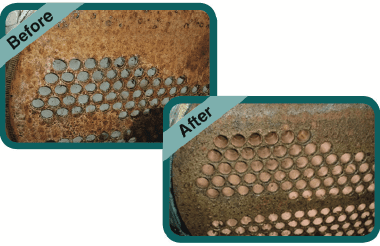
SDS+RTD is a non-toxic, non-corrosive, non-flammable, non injurious tar oil base solvent, heavily fortified with wetting and penetrating agents used for the rapid removal of water scale, lime and rust deposits found on the water side of any equipment that is water cooled, water heated or water operated, in any manner.
SDS+RTD is designed to work in conjunction with isolation valves that provide hot and cold service connections. If these valves have not been installed on your heater, then the heater must be disconnected from the plumbing and drained, so the SDS+RTD can be connected directly to the cold and hot water connections. SDS+RTD is NSF approved and safe for both personnel and equipment and can be disposed down regular sewer drains.
Request InfoSDS+RTD is biodegradable which allows for expended solution to be disposed of through regular sewer systems with a water flush. The solution is non-toxic, non corrosive, non-flammable and non-injurious to personnel when used as directed at any temperature within operating limits. (Not to exceed 120F) The solution does not corrode, erode, attack, pit, oxidize or have other deleterious affects on metals or materials such as:
The exceptions are some alloys of aluminum, magnesium and stainless steel. These metals will oxidize and, with a few exceptions, discolor. Some alloys of these metals are known to discolor and react galvanically in concentrated SDS+RTD solutions. To minimize this reaction, use a diluted SDS+RTD solution. Test compatibility on a small sample area. It is recommended that SDS+RTD be diluted 50% or more when cleaning chrome as most chrome finishes will discolor.
SDS+RTD is an electrolyte, as are most cleaning agents. An electrolyte may cause plating in some types of equipment. This means a transfer of small amounts of metal onto another metal. In some instances a thin coating of copper may be plated onto a steel drum while circulating an electrolyte such as SDS+RTD. The only time plating occurs is when two different metals are in an electrolytic solution.